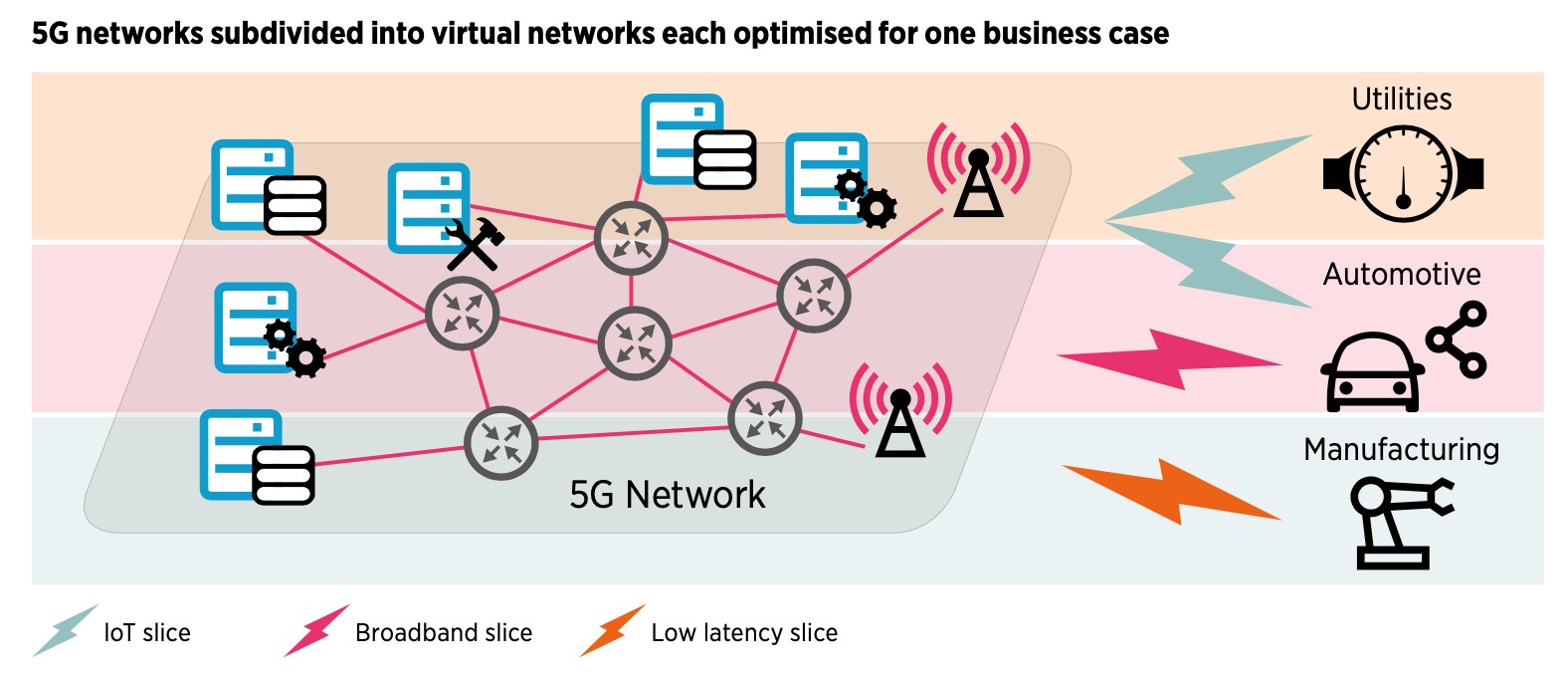5G is the fifth generation of mobile technology, which, when paired with other technological advancements such as AI, Cloud Computing, and IoT, is pushing the frontiers of wireless systems to new heights. It is not only substantially faster than previous-generation services, but it is also a key step toward achieving the goal of intelligent connectivity and a better future.
Since the initial generation of mobile technology, a lot has changed.
We had smart phones, app stores, and a plethora of applications thanks to 4G.
5G, on the other hand, is fundamentally transforming both our professional and personal life by enabling new use cases such as connected vehicles, augmented reality, and enhanced video and gaming.
There are three broad use cases categories in 5G NR utilising key characteristics of speed, latency, and reliability.
- Enhanced Mobile Broadband (eMBB): refers to increased peak and average data rates, capacity, and coverage.
- Massive Machine Type communications(eMTC): refers to large number of connected devices supporting IOT use cases that depend on high device density, high battery life and high data rates.
- Ultra-reliable low latency communications (uRLLC): refers to very low latency and highly reliable networks like remote surgery, automated cars etc.
5G is being hailed as a key enabler for a slew of new industry applications.
However, not all use cases have the same requirements. While some applications, such as remote surgery, necessitate ultra-reliable, low-latency networks, others, such as AR/VR, necessitate incredibly high internet connections. This is where the concept of Network slicing comes into play.
What is Network Slicing
Network slicing is a network configuration that enables the creation of numerous networks (virtualized and independent) on top of a shared physical infrastructure.
A network slice could be implemented across different operators and span multiple components of the network (e.g., terminal, access network, core network, and transport network). A network slice is isolated from other network slices and contains dedicated and/or shared resources, such as computing power, storage, and bandwidth.
Network slicing isn't a brand-new notion in 5G. Even 4G networks allowed for some customization. However, the level of customisation is not as advanced as it may be with 5G.
 Image courtesy of "GSMA introduction to network slicing"
Image courtesy of "GSMA introduction to network slicing"
Network Slicing offers the biggest commercial innovation opportunity in the 5G era. It will enable operators to create predefined, differing levels of services for different enterprise verticals, enabling them to customise their own operations. The customisable network capabilities include data speed, quality, latency, reliability, security, and services.
Key features of Network Slicing
The key features of network slicing can be divided into two components
- Network Connection Service: The network connection services include technical attributes that are offered at connectivity level and determine the behaviour and topology of the slice. Some of the important ones include - Near Real time latency, Guaranteed SLAs, coverage, device density, energy efficiency and security.
- Network Resource Service: Besides the connectivity a business customer may be granted access to run proprietary applications with lifecycle management support. Examples of applications that can be provided include - Big Data Analytics, Cloud and Edge computing, partner integration and APIs.
Business impact of Network Slicing
Customers can acquire bespoke networks based on their business demands at a relatively low cost through network slicing. Furthermore, customised SLAs can govern these networks. Potential use cases for Network slicing can be in multiple industries be it - Automotive, Healthcare, Utilities, Media and Entertainment. Financial and government.
Some of the interesting new use cases can be
1. Automotive:
V2X is one of most prominent use case. It refers to a network that can concurrently supply high throughput of in-car entertainment as well as communication between automobiles. Vehicle-to-vehicle communication necessitates ultra-low latency and ultra-reliable networks, whilst in-car entertainment necessitates eMBB features.
2. Massive IOTs:
Smart services such as gas/water metering, city lights management, transport traffic management or tracking/monitoring will become widespread in the future. If various massive IoT devices are introduced to existing networks, service quality and performance to legacy users will not be guaranteed because of massive connectivity and extremely different service characteristics (e.g., low data rate, periodicity, low cost and very long battery device). As a solution, operators can deploy new slices for these different types of use cases to isolate the impact, as well as, to monitor or charge customers differently.
3. Augmented and virtual reality use case
When 5G and network slicing are combined, augmented and virtual reality applications may run reliably and predictably. Television shows, for example, may use 5G to holographically capture interviews and events, transport them to a TV studio, and broadcast the live visuals, allowing studio guests to interact with the holographic images. Interviews from sporting events, for example, when the athletes are projected directly into the studio to be interviewed, are an example of this. Large, latency-sensitive data streams for multimedia applications benefit from network slicing because it allows for the dedicated bandwidth and computing resources needed to ensure flawless delivery.
4. Secure banking use case
Mobile payment and banking applications that are now running on the public network can benefit from the creation of a specialised network slice for a bank or payment system. This separates the payment and banking software from the generally shared WiFi network, allowing for increased security and flexibility.
5. Industry use cases:
For industrial automation production, a factory can order a URLLC slice from the operator, which allows the plant's robots to be controlled and monitored.
Industrial manufacturers' control and monitoring systems are recommended for deployment in edge data centres (i.e., as an edge computing application) via an open interface provided by operators.
Challenges and Alternatives to Network Slicing
Network slicing is a game-changing technique that allows network operators to alter the network on the fly and serve different virtual slices of the network to different customers. Customers profit from network slicing since they can basically specify the functionality of their slice, whether it's a specified bandwidth, latency level, or security type. However, Network slicing is still in its early stages of adoption. Even though more than 150 operators and 70 nations have deployed 5G, this remains the case. T-Mobile launched its nationwide 5G SA network in August 2020 but has not introduced network slicing yet. Verizon and AT&T say they are still testing 5G SA.
One of the primary reasons for limited deployment is the fact that most 5G networks use non-standalone 5G (NSA), which relies on the 4G LTE network core. Although network slicing can be done on LTE and NSA, a 5G core is required for it to perform properly.
Additionally, there are also alternate solutions with private mobile networks that is generating interest lately. A private 5G mobile network is built using its own spectrum while a network slice is procured from a provider’s public 5G network. As opposed to network slicing a private network offers complete control over network design, use cases, and access.
However Network slicing has its advantage over private network in being less expensive, faster to provision and requires less IT expertise and resources. With standalone 5G cores becoming more common, network slicing deployments are anticipated to increase in the coming months.
Conclusion
The objective of 5G network slicing is to create numerous virtual networks on a shared physical infrastructure that ensure an agreed-upon SLA for specific capabilities sought by different service providers or tenants. Network slicing is a technique that enables new industrial use cases to meet widespread service requirements.
While the actual implementations of Slicing have been limited so far, once enabled it will act as a catalyst for corporate clients in the same way that digitalization has opened up the consumer market to previously inconceivable experiences.


















